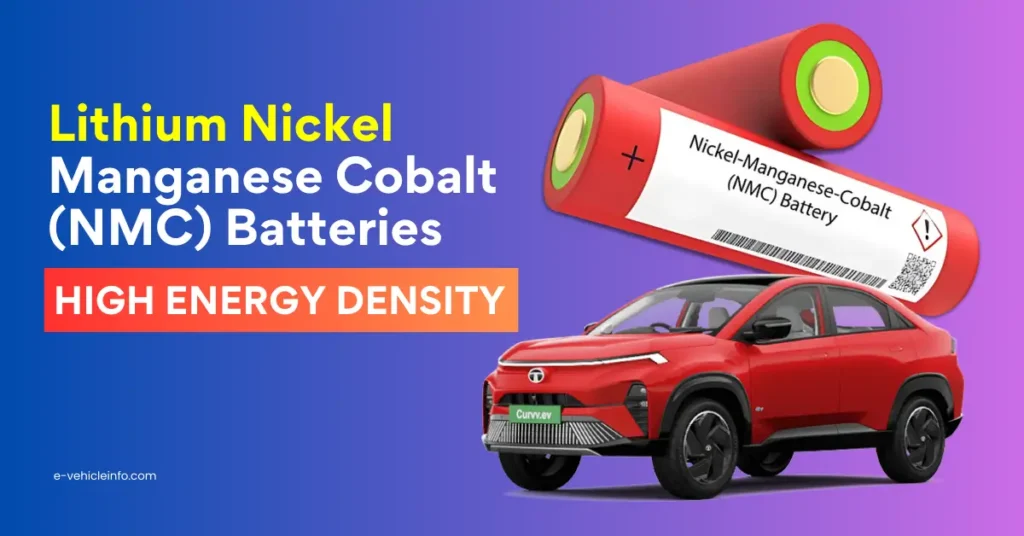
In our quest for cleaner and more efficient energy sources, lithium-ion batteries have emerged as a frontrunner in powering the devices we use daily.
As the demand for electric vehicles (EVs) and renewable energy storage solutions continues to rise, the need for advanced battery technologies becomes more pressing.
Enter the Lithium Nickel Cobalt Aluminum Battery, often abbreviated as NCA.
This remarkable battery chemistry is making waves in the world of energy storage due to its impressive energy density, reliability, and performance.
The Lithium Nickel Cobalt Aluminum Battery derives its name from its key chemical components: lithium, nickel, cobalt, and aluminum. Its chemical formula is typically represented as
This unique combination of elements plays a crucial role in the battery’s performance and overall efficiency.
During the charging process of an NCA battery, electrical energy from an external source is supplied to the battery, causing lithium ions to move from the cathode to the anode.
Here’s a step-by-step breakdown of the electrochemical reactions that occur:
During the discharging process, the battery supplies electrical energy to an external device or system. Lithium ions now move from the anode to the cathode, and the stored energy is released.
Here’s how the electrochemical reactions unfold:
Advantages: Graphite anodes offer excellent reversibility, which means they can efficiently store and release lithium ions without significant degradation over time.
They have a high coulombic efficiency, which is essential for maintaining battery capacity.
Advantages: The use of LiNiCoAlO2 as the cathode material in NCA batteries offers several advantages:
High Energy Density: NCA cathodes provide a high energy density, allowing the battery to store a significant amount of energy in a compact space.
This high energy density makes NCA batteries suitable for applications where size and weight constraints are critical, such as electric vehicles (EVs).
Good Conductivity: NCA materials exhibit excellent electrical conductivity, which aids in the rapid charge and discharge of the battery.
This is particularly important in EVs, where fast charging is essential to enhance convenience and driving range.
Thermal Stability: NCA cathodes are known for their thermal stability, which reduces the risk of thermal runaway and enhances the safety of the battery.
Long Cycle Life: NCA cathodes can endure a large number of charge and discharge cycles, contributing to the overall lifespan of the battery.
High Energy Density: One of the most significant advantages of NCA batteries is their high energy density.
This means they can store a large amount of energy in a relatively compact package, making them ideal for applications where space is limited, such as electric vehicles.
Long Cycle Life: Lithium Nickel Cobalt Aluminum Batteries are known for their long cycle life, which means they can endure a substantial number of charge and discharge cycles before their capacity significantly degrades.
This characteristic increases the lifespan of the battery and reduces the need for frequent replacements.
Fast Charging: NCA batteries can be charged rapidly due to their excellent conductivity.
This feature is especially valuable for electric vehicles, where quick charging is essential to improve convenience and range.
High Voltage Output: These batteries provide a higher voltage output compared to some other lithium-ion chemistries, which can be advantageous in certain applications.
Wide Temperature Range: NCA batteries are known for their ability to operate effectively over a wide temperature range, making them suitable for use in diverse climates.
Read More: Lithium Iron Phosphate Battery Working Process and Advantages in EVs
Panasonic is a well-known manufacturer of lithium-ion batteries, including NCA batteries, for various applications, including electric vehicles.
LG Chem is a leading South Korean battery manufacturer that produces NCA batteries for electric vehicles and energy storage systems.
Samsung SDI, another South Korean giant, is actively involved in the production of advanced lithium-ion batteries, including NCA-based batteries for various applications.
BYD, a Chinese multinational company, is a significant player in the electric vehicle industry and produces NCA batteries for its vehicles.
CATL is a major Chinese battery manufacturer known for producing various lithium-ion battery chemistries, including NCA batteries, for electric vehicles and energy storage.
Toshiba is a Japanese conglomerate that manufactures NCA batteries for a range of applications, including industrial and automotive use.
SK Innovation, based in South Korea, is involved in the production of NCA batteries for electric vehicles and energy storage systems.
CALB is a Chinese company specializing in lithium-ion battery manufacturing, including NCA batteries for electric vehicles and renewable energy storage.
ATL, based in China, is a prominent lithium-ion battery manufacturer that produces NCA batteries used in various electronic devices and electric vehicles.
EVE Energy, also based in China, is engaged in the production of lithium-ion batteries, including NCA batteries, for electric vehicles and other applications.
This post was last modified on January 8, 2025 5:52 pm
In a major stride toward sustainable mobility, the Himachal Pradesh Police have incorporated six custom-modified Tata Curvv electric vehicles into…
In India, the automotive and transport industry is undergoing significant changes. This transformation isn't just about improving roads and infrastructure;…
Montra Electric, the clean mobility brand from the prestigious Murugappa Group, has launched the All-New Super Auto, a next-generation electric…
Union Minister Nitin Gadkari (Minister of Road Transport and Highways of India) has once again made a bold statement that’s got…
India’s electric four-wheeler (E4W) market slowed in September 2025, following a record-breaking August, with 15,038 units sold, representing an 18%…
India’s EV market hit 1,04,056 electric two-wheeler sales in September 2025. TVS, Bajaj, and Ather led the chart, while Ola…
This website uses cookies.